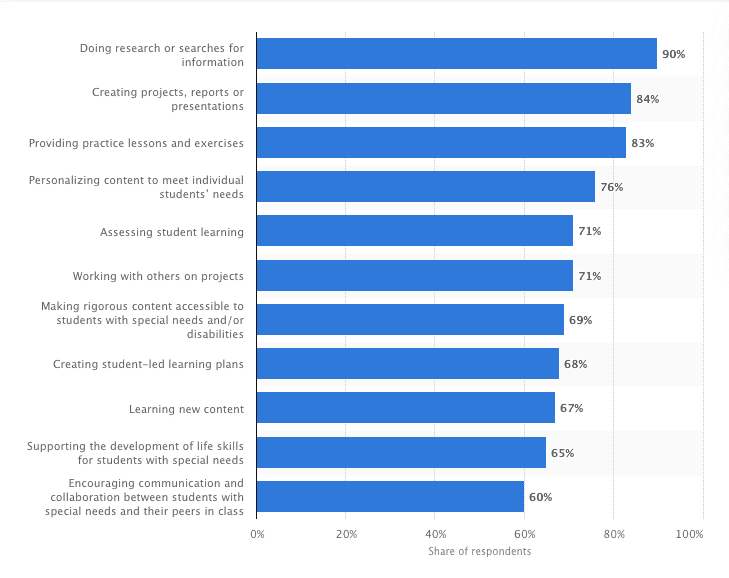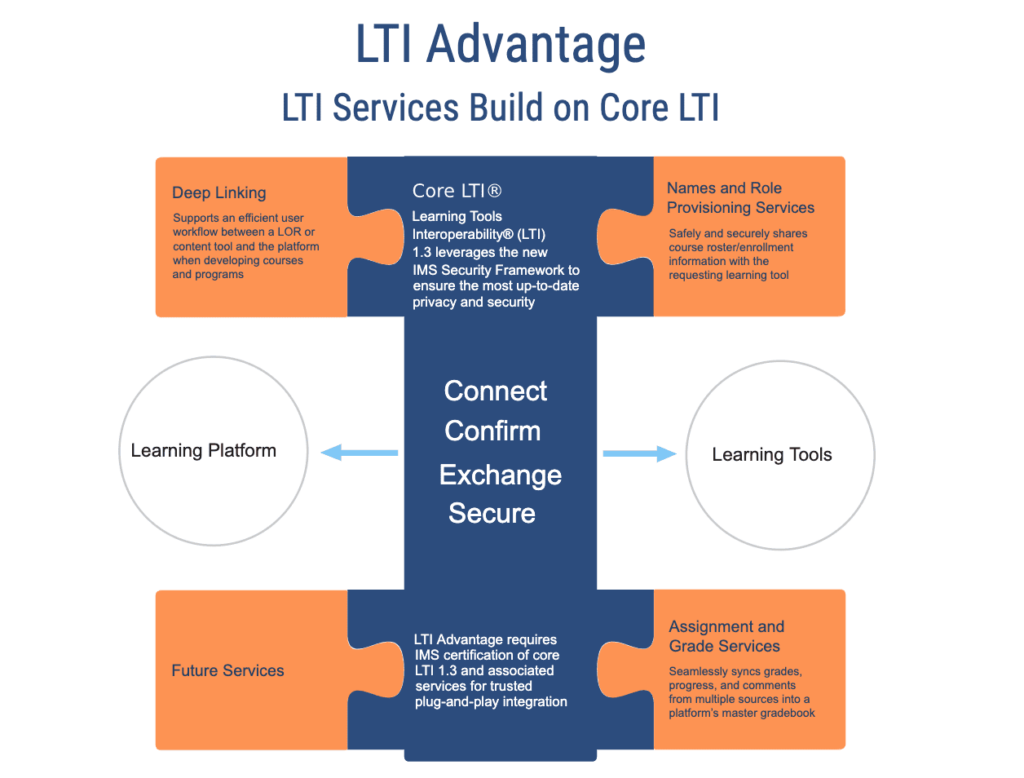The Covid-19 pandemic has upended education and learning all around the world. From parents and children adapting to homeschooling, to enterprises quickly implementing virtual training for their employees, there’s barely been a part of the sector that hasn’t been impacted. For this new reality, online learning organizations need to prepare their tools and platforms to be able to support an unprecedented increase in volume of users.
The previous learning model had at its heart people being physically present together. These efforts were then completed by online learning. The effect of the pandemic has been to reverse this. Now it’s online learning at the center, with the people coming physically together as a complement.
Online learning has been growing steadily in recent years
Over the past few years the elearning industry has experienced a steady growth in popularity and technological progress. The market was growing significantly even before recent world changing events. In a 2019 survey more than 80% of teachers in public schools in the USA stated that digital learning tools were effective for a range of activities, from creating projects, to providing practice lessons and exercises. More than 53% of educators wanted to use digital tools more often.

The result of the pandemic is that growth in online learning has accelerated dramatically. In this article we’ll dive deeper into some of the technical elements and challenges that organizations need to bear in mind. In particular, we’ll examine:
- Use cloud computing to rapidly scale
- The importance of performance and continuous testing
- Ensuring the interoperability of learning tools
- The need for rich content using 3D, augmented and virtual reality
- Platform integrations to help ensure adherence to industry standards
- The role of artificial intelligence in creating new digital learning experiences
Use cloud computing to rapidly scale
The rapid increase in the expected number of users in e-learning platforms will mean that those companies already using cloud services will be well positioned to scale their offerings. Companies with on-premise data centers will find it harder to be able to support the likely significant increase in usage, and benefit from greater flexibility. Those elearning providers already using cloud services need to focus on putting in place scalability plans, revising auto-scaling policies, planning for high availability, and ensuring deployments across multiple availability zones.
Many enterprises are choosing to move completely to serverless adoption in the most common infrastructure service providers such as Google and AWS. Here they’re implementing systems oriented to cloud based APIs backed by cloud functions with discrete operations, leveraging large scale relational databases, NoSQL engines and cache servers to help improve the response times of their applications.
Implement continuous development cycles to speed up product development
Times of increased demand mean tougher competition and a greater need for differentiation. Those organizations which have established continuous delivery processes, including development, testing and performance are able to react faster and release new features quicker. This emphasizes the importance of adopting tools, such as Jenkins, and to have them embedded in your development life cycle.
How do you know your platform will be able to support an increased volume of learners? Test! Companies are doing performance testing at a much greater level than their projected volume increase. They have in place exhaustive plans for functional and automated tests to predict stability. Agile methodologies such as Scrum, behavior-driven development (BDD), and integrated teams formed by having all roles involved in the software life cycle, help product development to move faster.
Build products in accordance with learning tool interoperability
Some enterprises in EdTech focus on creating course content and implementing learning tools, such as quizzes and tests. These are often exposed to external platforms. Even self-contained features of these systems will often need to be compatible with such platforms. In order to develop new business as a tool provider, it’s critically important to ensure that you can embed your products in key learning management systems (LMS).
An important technical aspect to this matter is adopting Learning Tool Interoperability (LTI) standards and understanding the details behind learning tools interoperability – as referred to at: Learning Tools Interoperability.
The latest established version is LTI v1.3. This standardizes the information exchange of core learning actors and entity data, tools meta-data, related to student outcomes. Companies adopting these standards have smooth integrations and easier adoption of their tools in the different LMS platforms as they meet this standard out of the box.

Content authors are developing rich content using 3D, augmented and virtual reality
Content authors and publishers are looking for innovative ways to engage students and find new ways to transmit knowledge. 3D animations in courses allow for better understanding of objects in fields such as medicine. There are plenty of frameworks that allow for 3D animations to be created that can easily be embedded to the digital content server for learners. There are several Javascript libraries that help generate this type of content along with WebGL engines and HTML canvas.
There are some institutions taking this trend further, by adopting augmented and virtual reality. There are tech providers with interesting solutions such as zSpace laptops (which are laptops designed for augmented reality and virtual reality) offering SDKs for developers to create innovative and custom solutions.

Platform integrations help ensure adherence to industry standards
Sometimes companies may not want to fulfill all aspects of the elearning space. Here, the best path forward is to partner with a third party vendor to cover your needs out of the box. This typically requires some level of platform integration. IMS OneRoster, LIS and other integration standards are key. They have clear interfaces and model definitions that capture most typical online learning data models and you can implement them via file exchange or JSON APIs.
When speaking about implementation, you can achieve this type of integration by leveraging any modern day design, from serverless models, microservices and cloud based integration tools to what best adjusts to your future architectural vision of your ecosystem. The most important technical and business conclusion in this area is simply: pay attention to industry standards!
Artificial intelligence to create new digital learning experiences
This is a particular field that has an incredible potential for online learning. Machine learning tools, Spark clusters, natural language processing (NLP), platforms such as AWS SageMaker, Google AI Hub, Google AI Platform, all are part of a tool set that is enabling a new world of technological advances. Some of the best examples are:
- Accessibility. Generate automatic text transcripts from audio content or generate automatic speech versions of text content in courses.
- Personalized learning. Recommendation engines that tailor course content to students depending on performance profiles and different attributes such as location and demographics.
- Chatbots. Facilitate the user experience and reduce costs by automating communications. Chatbots can help provide much improved support for users
Looking to the future
As the Covid-19 pandemic continues to transform the online learning industry, organizations are having to focus on their technology capabilities. Around the world, people are realizing that online education is no longer a substitute for traditional methods, but is able to help rapidly adapt to our current situation, and foster positive educational outcomes.
EdTech is here to stay and with it, a new set of questions become important. How many actors had a technological vision of their platforms that involved a sudden increase in demand? What does the future of EdTech hold in store? What does it take to lead this space – what kinds of educational experiences will we need to create? What will make companies and products unique? These are the issues which everyone in the EdTech industry, from executives to tech experts, to educators and students, need to be thinking about.



